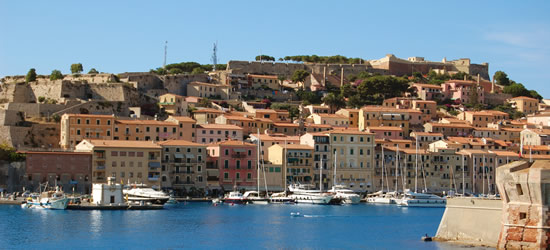It is said that Tuscany, one of the principal Italian districts most appreciated by world-wide tourism, has so many art treasures and cities that it is impossible to discover them all even within a whole lifetime. This applies to the Italian Riviera, where ports, harbours and landing-stages are so numerous and picturesque that we could navigate for an entire season without being able to visit them.
The word Riviera is derived from the French word rivière which means not only a river but a necklace of precious stones and such a description is apt, since the region is not only geographically beautiful but also picturesque. Villages and towns of a distinctive Ligurian style of architecture are dotted along the coast like priceless gems, fastened by a Mediterranean necklace.
The Tuscan Islands dot the sea between Italy and Corsica. They are the mountain peaks of the continent of Tyrrhenia which sank into the sea in the Quarternary era leaving a chain of islands across the western Mediterranean: the Balearics, Sardinia, Corsica and the Tuscan Islands all belong to this group.
The Tuscan archipelago consists of Gorgona, Capraia, Elba, Pianosa, Montecristo, Giglio and Giannutri. With the exception of Pianosa and Giannutri, they are all mountainous islands rising sheer from the sea.
The luxuriantly fertile province of Liguria produces citrus fruits, wines, chestnuts, olives and olive oil in abundance and in the hills the mushrooms grow profusely. A variety of regional dishes are based on mushrooms and locally grown ingredients from the countryside. Naturally you will indulge in the pleasures of la dolce vita: good food, good wine and enhancing your wardrobe.
With its dreamy light and sumptuous landscapes made for romance, and its three millennia of history, culture and cuisine, you may end up staying longer than you originally planned, as Tuscany seduces just about everyone.
































